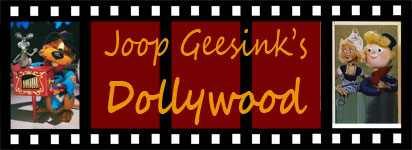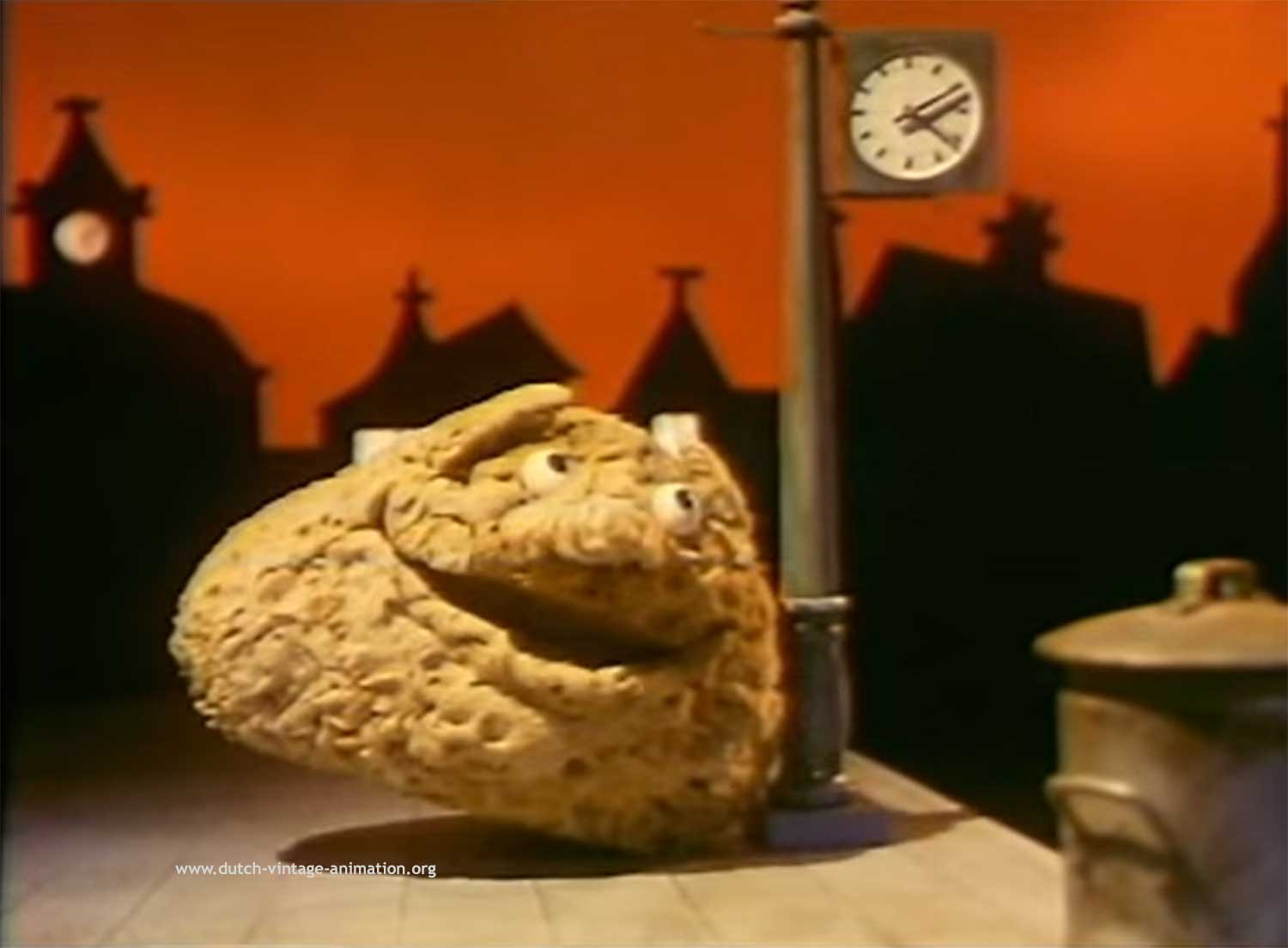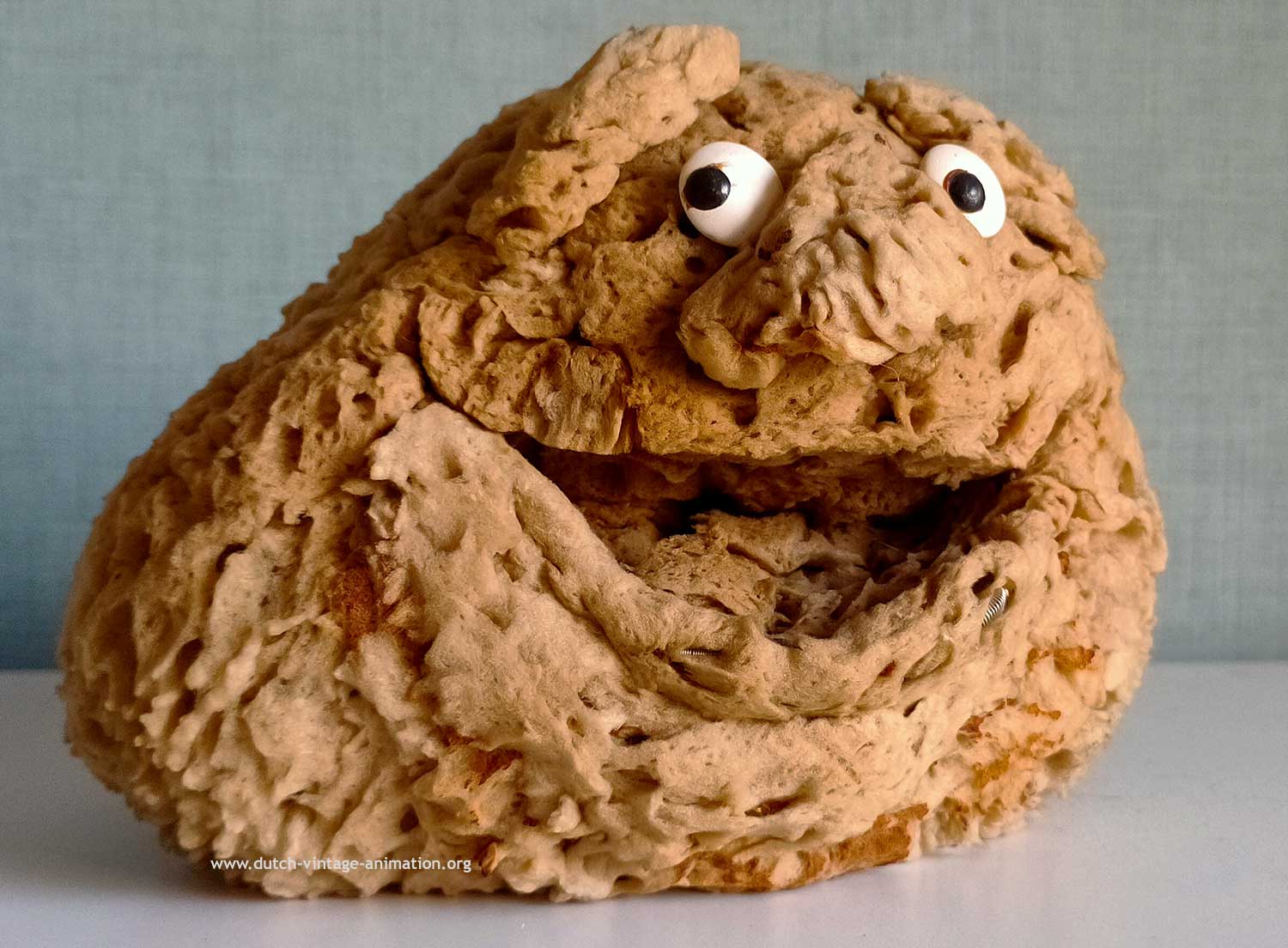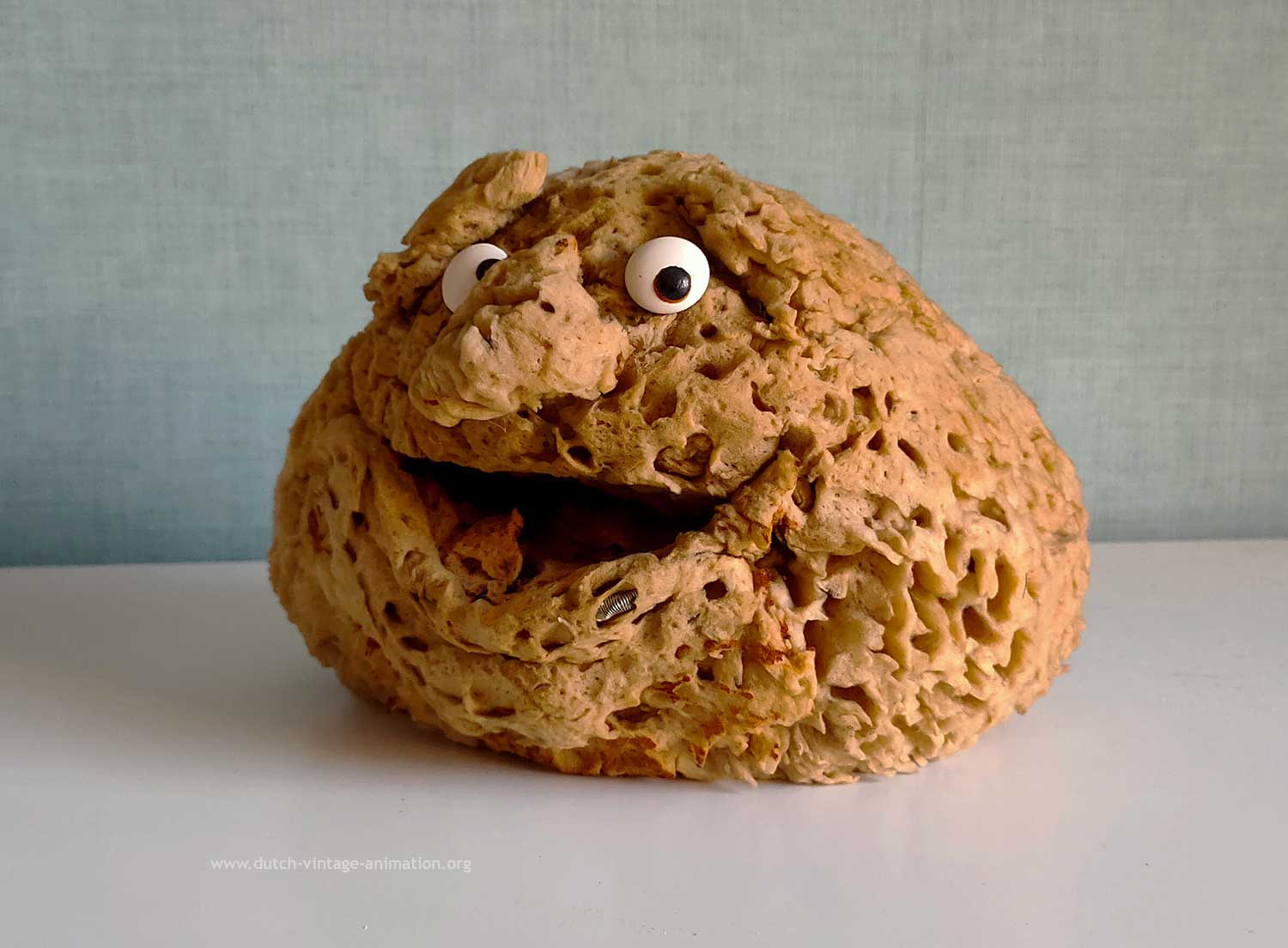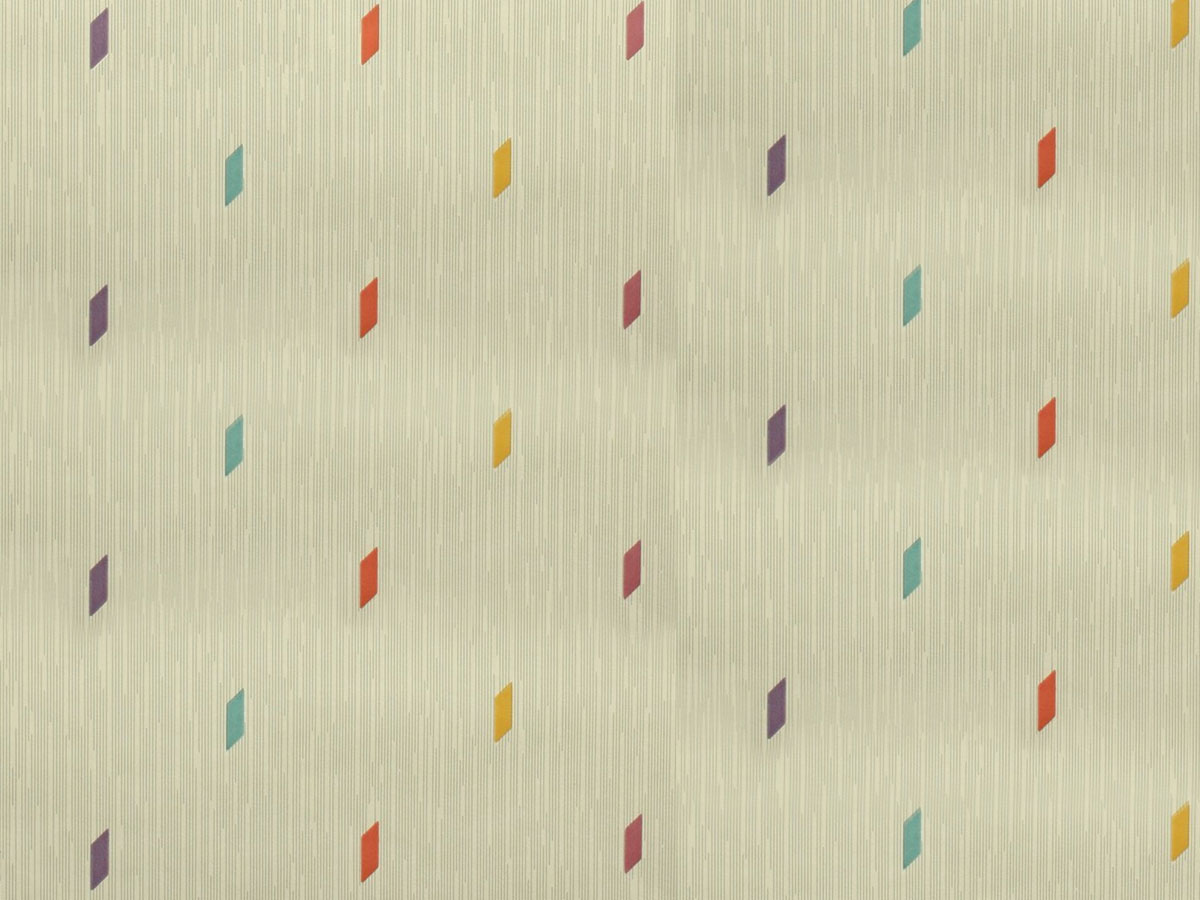
A sponge praises its cousin, a kitchen roll, which can absorb liquid as well as it does.
Convincing
When you tell someone you have been approached by a sponge, the reaction will be one of surprise, to say the least. Yet in this film, it is an original chamois sponge that introduces its 'cousin', a kitchen roll, to the (TV) viewer.
The kitchen roll as a kitchen aid was more common in the mid-1960s in the United States than in Europe. Nevertheless, it was deemed necessary to compare the absorbent capacity of this paper with that of a sponge.
The result shows a convincing character. With productions like this, Joop Geesink's collaborators proved that really anything can be brought to life.
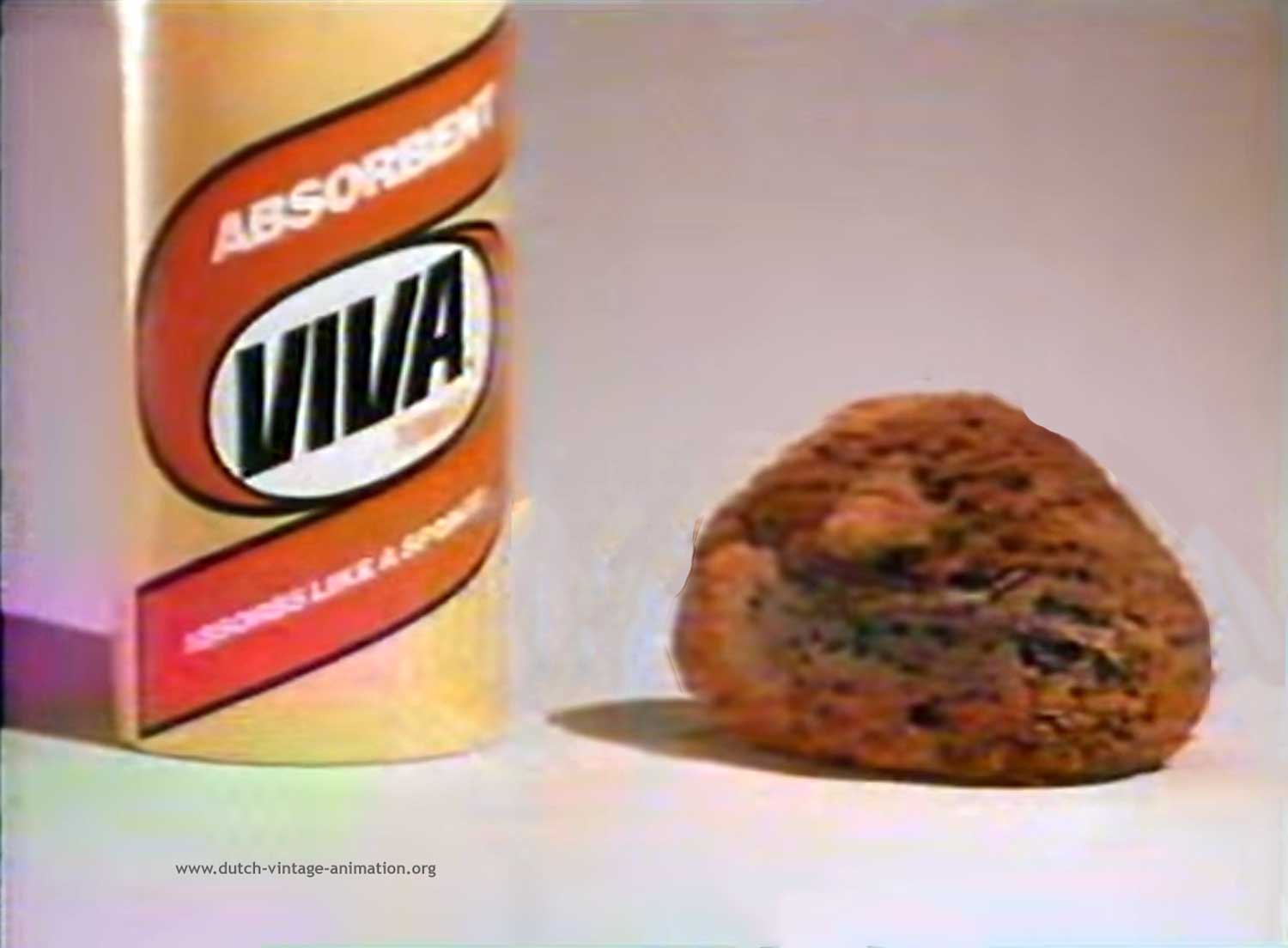
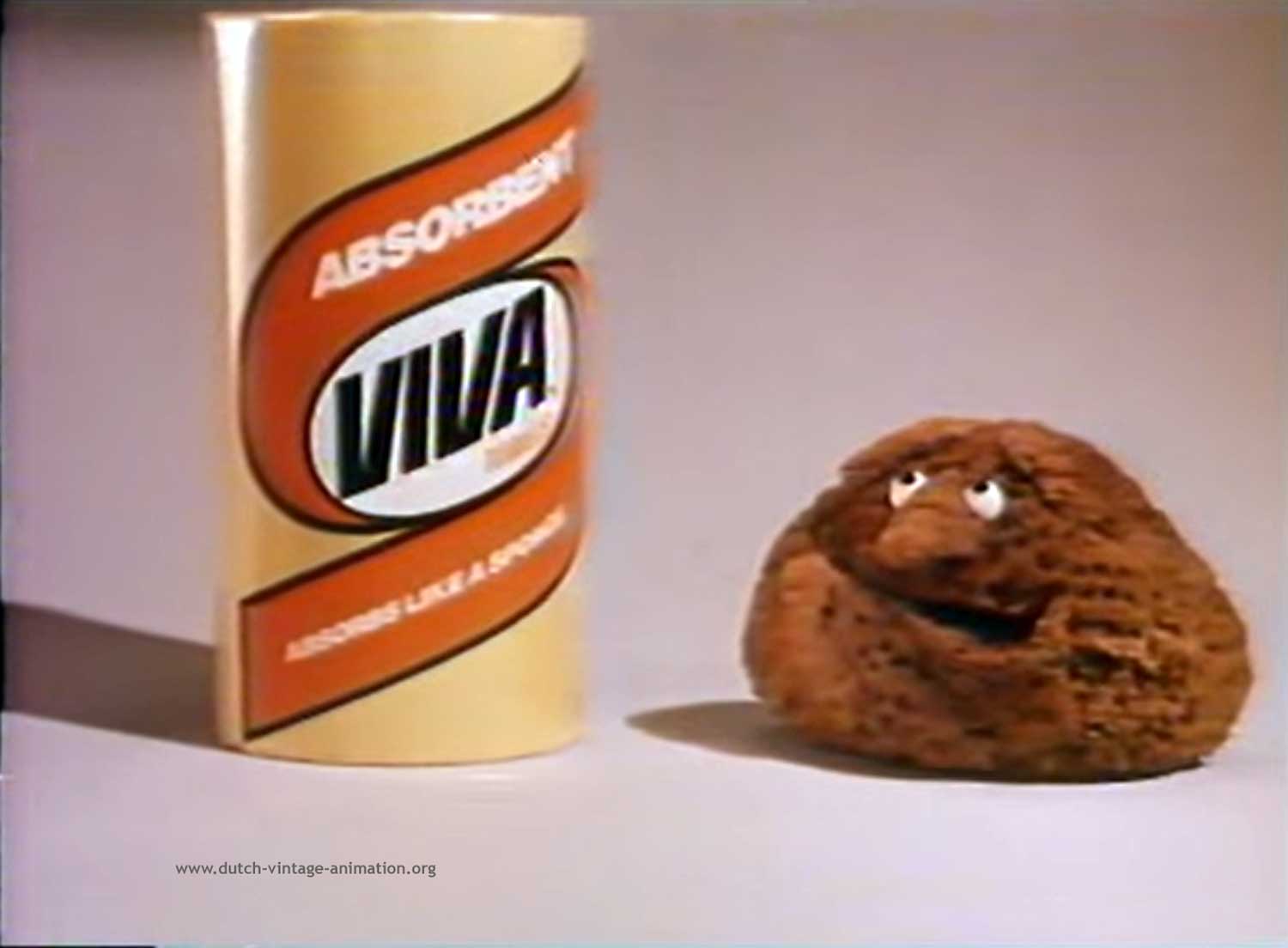
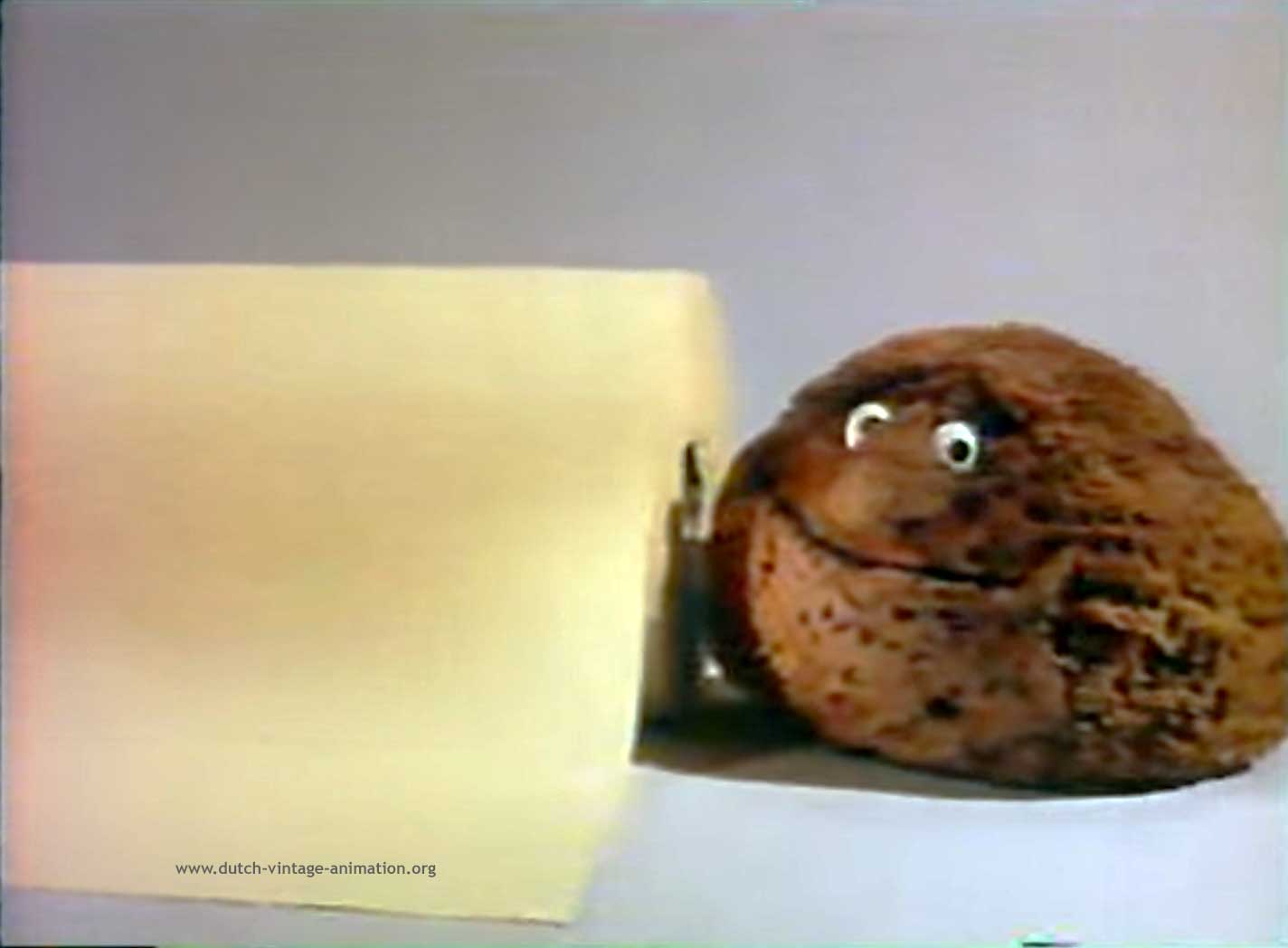
Simplicity
This film is strong because of its simplicity in image and message. A strong voice is brought to life through Cor Icke's animation. Keeping the set 'empty' benefits the message.
Like all films from that era, the commercial starts with one second without sound. This has a technical cause. This time is used to show an 'ordinary sponge' standing next to the packaging. Suddenly it gets eyes and a mouth. (see picture on the right.)
Trivia - Come back
The webmaster of this site, Arie den Draak and his brother Huibert, were active from the mid-1970s as amateur animation filmmakers and from the mid-1980s as professional stop-motion filmmakers. Their studio was called Den Draak Filmproductions. Their inspiration was clearly the Dollywood films.
In that period, a connection was established with the former Toonder-Geesink studios in Nederhorst den Berg (NL) and contact was made with several employees. This contact went so well that Huibert, in addition to his own work as an animator, did many animations of Loeki the Lion and several commercials for Toonder-Geesink studios.
In the early days, puppeteer Harry Tolsma was still working at the studio, despite his advanced age. This man had been a staff member at the studio since 1947 and made numerous technical improvements to the production of the stop-motion puppets. He was enthusiastic about the ambitions and results of the Den Draak brothers and a friendship developed.
The brothers regularly visited Harry Tolsma at home, where he passed on a lot of his expertise to Arie den Draak. Even after his retirement, he remained active as an industrial designer. If the opportunity arose, he made puppets or set parts for the Den Draak Film productions.
Harry passed on many of his technical skills to Arie, who also produced puppets for various productions.

In the 1990s, a title film was shot on 35 mm film and distributed on video tape. It was often shown in person to an interested party or sent to them. Websites did not yet exist at that time. It was therefore necessary that the name of the studio was mentioned. So as an animation studio, you made an animated title.
The differences
The "puppet" in the Viva commercial was assembled from several original natural sponges in which a wire frame was hidden to animate the mouth and eyes. All the wires came together in a foot, which was invisible to the camera.
The doll had been at home for years in the studio of its creator, Harry Tolsma, who liked the idea of the Den Draak brothers to have this figure perform in a film. It became an intro to the showreel of the then animation studio "Den Draak Filmproductions" of the mentioned webmaster and his brother. The original commercial is shown here, followed by the 1990 homage.
The original was animated by Cor Icke. The 1990 homage was animated by Huibert den Draak. He later said: "The sponge was made of a natural product. Its elasticity had been greatly reduced because the sponge had been standing on a desk for decades. If the animation had been done as I intended, the sponge would probably have torn."
Taking care of
Harry Tolsma had kept several dolls from the Dollywood period. They were in his living room and in his (attic) studio. Harry made a statement that Arie den Draak would take care of the dolls when he died. They are now in Arie's care.
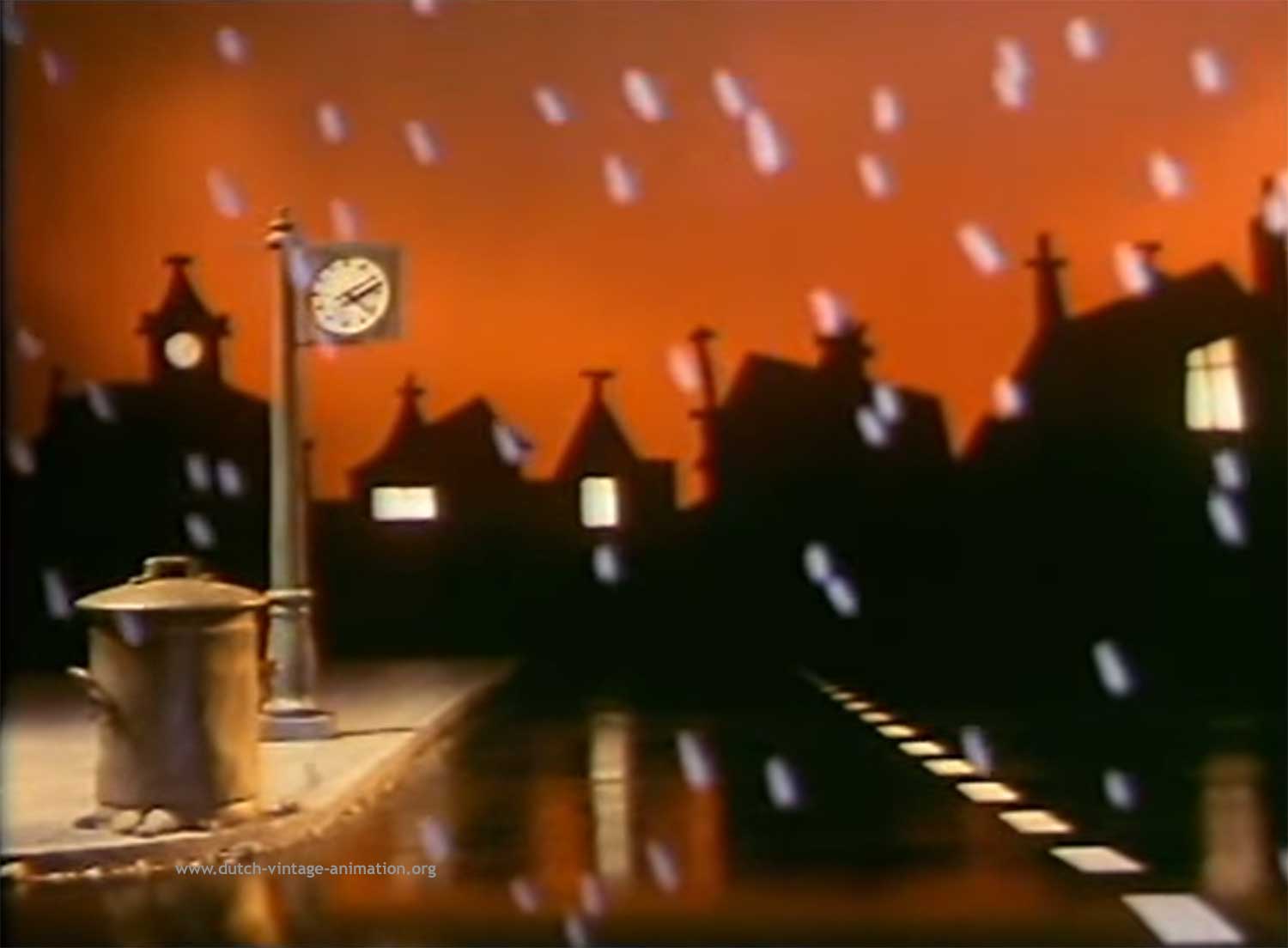
In 1990, it was still common to include effects such as 'rain' as a cartoon in the set. This was done on replaceable glass plates. During filming, the glass plates were a nuisance because of unintentional reflections. (There was a great risk that ambient light on the glass plate would be reflected by the camera and thus enter the picture). In addition, it limited the accessibility of the set.
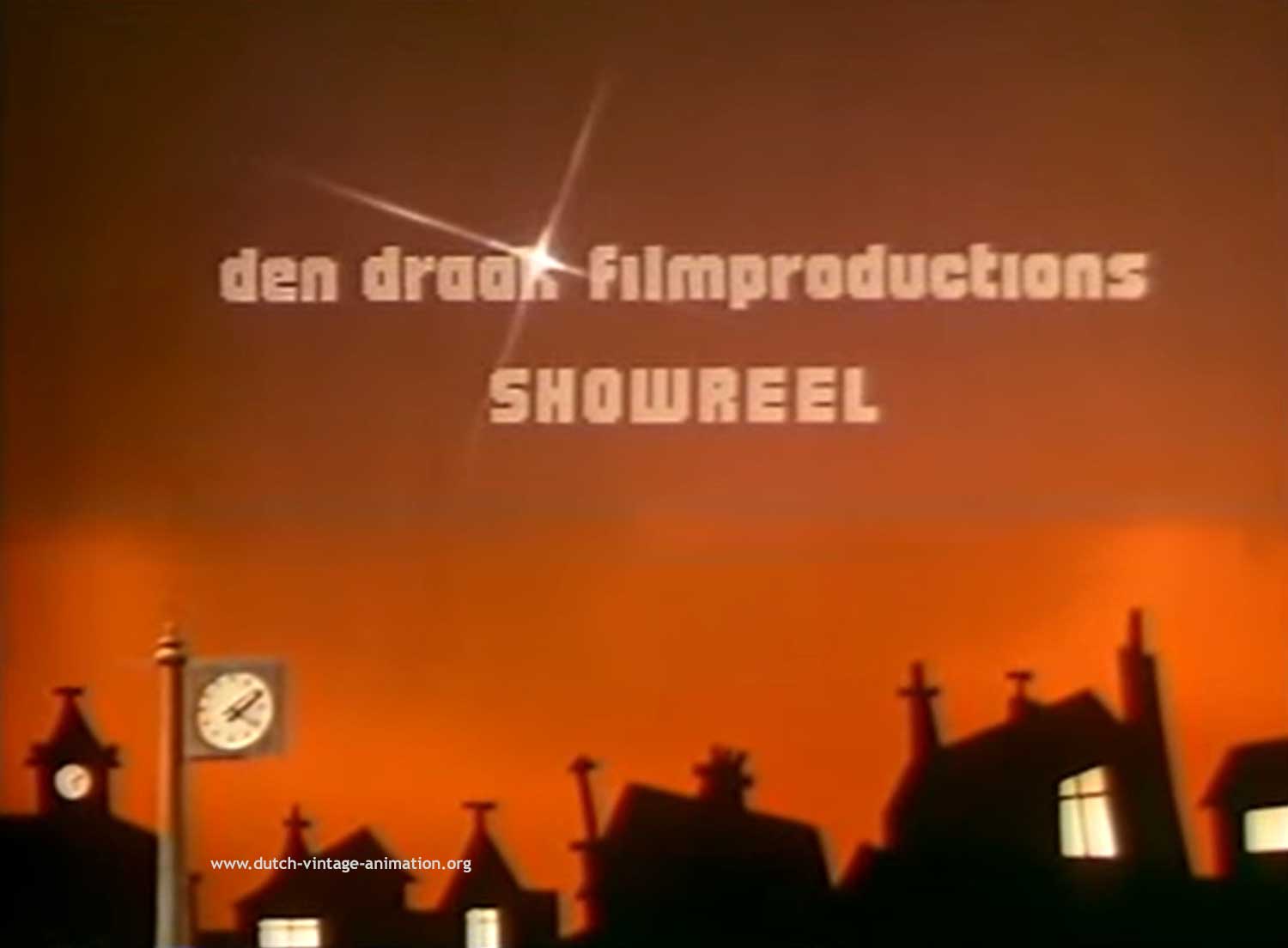
The title was shot into the camera in a double take. In an additional double shot, the 'star flair' was copied over the title. A laborious shot, but it was considerably cheaper than having the trick done by the film lab. This detail drew praise at the time, because even then people thought that something had been done with computers, but it was still hardly practicable.
Credits - Viva Towels
| Title: | Viva Towels | |
|---|---|---|
| Client: | Viva Towels | |
| Year of production: | 1965 | |
| Duration: | 30 seconds | |
| Art Direction: | Henk Kabos | |
| Animator: | Cor Icke | |
| Puppet (sponge): | Harry Tolsma | |
| Format: | 35 mm, Eastmancolor |
Credits - "The Sponge"
| Title: | "De Spons" (The Sponge) | |
|---|---|---|
| Client: | Own work - Den Draak Filmproductions | |
| Year of production:: | 1990 | |
| Duration: | 1 minute | |
| Art Direction: | Huibert den Draak | |
| Animation: | Huibert den Draak | |
| Puppet (sponge): | From the personal archive of Harry Tolsma | |
| Format: | 35 mm, Eastmancolor |
